Italy open their World Cup 2022 qualifying campaign with a clash against Northern Ireland in Parma today. The Azzurri will be hoping to qualify for a major tournament with the same ease in which they qualified for Euro 2020, with new boss Roberto Mancini guiding his side through a flawless qualifying campaign. The optimism surrounding this current crop of Italian players is light years away from the derision the side experienced just three years ago.
After disastrously failing to qualify for the 2018 World Cup, the Italian national team needed drastic changes. The thud caused by their elimination against Sweden was too big to go unnoticed, but the national feeling was that their failure to qualify was the natural consequence of a slow malaise that had set in over the decade.
The Italian Football Federation moved swiftly after that dismal performance, sacking Gian Piero Ventura. To be fair, when you motion to bring on a defensive midfielder rather than an in-form striker when you desperately need a goal – as Ventura infamously did that night – you get what you deserve.
A teary Gianluigi Buffon remains the lasting image from Ventura’s ill-fated stint, and it was decided that Mancini would be the man to chart a new course for Italy. His brief was clear: regroup and prepare for Euro 2020.
And he has done a very effective job at that, rebuilding the fragile confidence of the team piece by piece. An impeccable record of 10 wins from 10 games in qualifying for Euro 2020 certainly suggests they’re moving in the right direction.
Looking purely at results, Italy have won 18 of their 27 games under Mancini (D7 L2). His 67% win ratio is the highest of any manager to have spent at least 20 games in the dugout for the Azzurri.
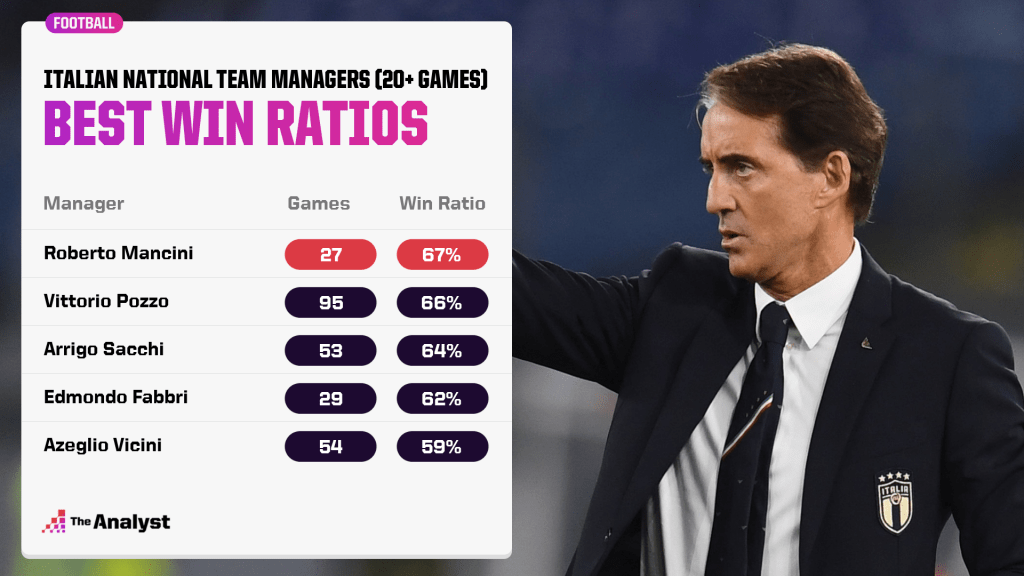
But how can a new manager, who inherited a group of players labelled a national disgrace, have turned things around so quickly?
Change Without Change
First, Roberto Mancini has given this side a much-needed breath of fresh air. In his first five games as Italy manager, the average age of his starting XI was 25 years and 260 days. In the previous five games prior to his arrival, the average age had been almost three years older than that.
Second, he’s established a structure and a clear pattern of play that his side are to emulate, even if the personnel on the pitch is different. In 24 of the 27 games under Mancini, Italy have setup with a 4-3-3 formation. When you compare that consistency with the two previous managers (Ventura and caretaker manager Luigi Di Biagio), that pair fielded six different starting formations in 18 games and didn’t use any of those more than six times.
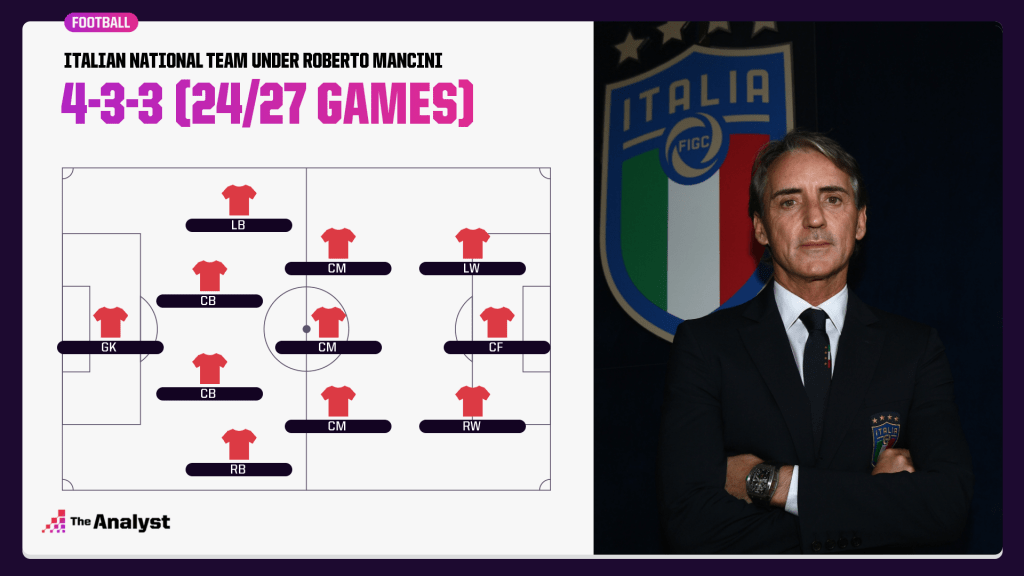
And the data shows us that the players are responding. Mancini’s Italy have been far more effective than under their prior two managers. They see more of the ball, take more shots and have more touches in the opposition box. Crucially, they’ve combined their improvements in the attacking facet of the game with defensive strength too, conceding fewer shots on average.
These are hallmarks of a rather untraditional Italian side, one that now plays with greater confidence, fluidity and attacking flair.
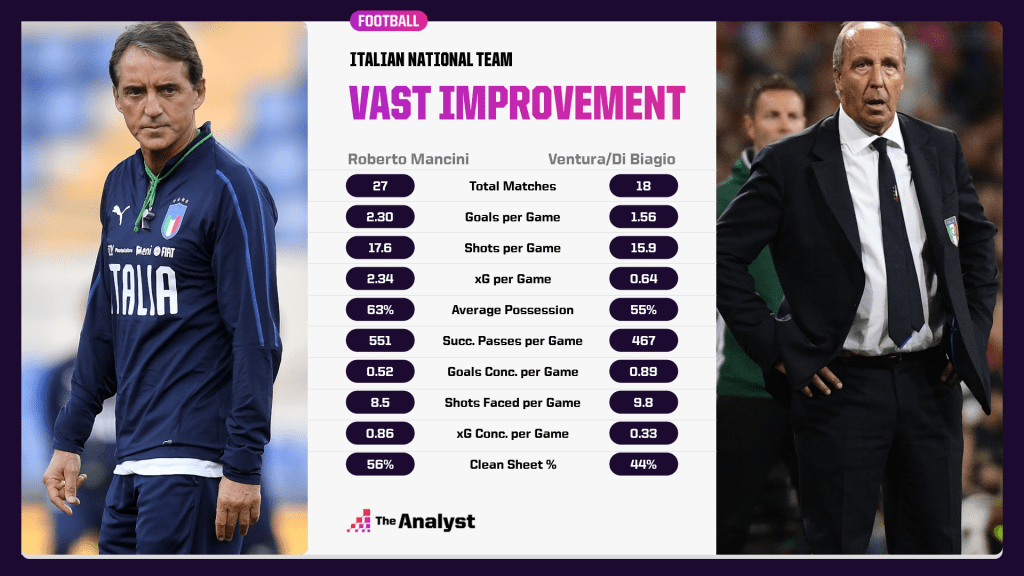
A Record-Breaking Unbeaten Run
Italy haven’t lost a game in two years. Admittedly, the postponement of Euro 2020 may have elongated that run further than it may have lasted in ‘normal’ circumstances, but the point remains. This new generation of Italian players do not know defeat. The Azzurri have won 15 of their 18 competitive games since 2019 and drawn the other three. It’s the first time in post-war history that Italy have gone two consecutive calendar years without defeat.
Across that timeframe they’ve scored 54 goals at an average of three per game. The contrast is stark when you compare those performances against 2017 and 2018 where the Azzurri won only nine matches with seven draws and five losses, scoring just 24 goals in the process.
That 18-game unbeaten streak is already the longest in the country’s history.
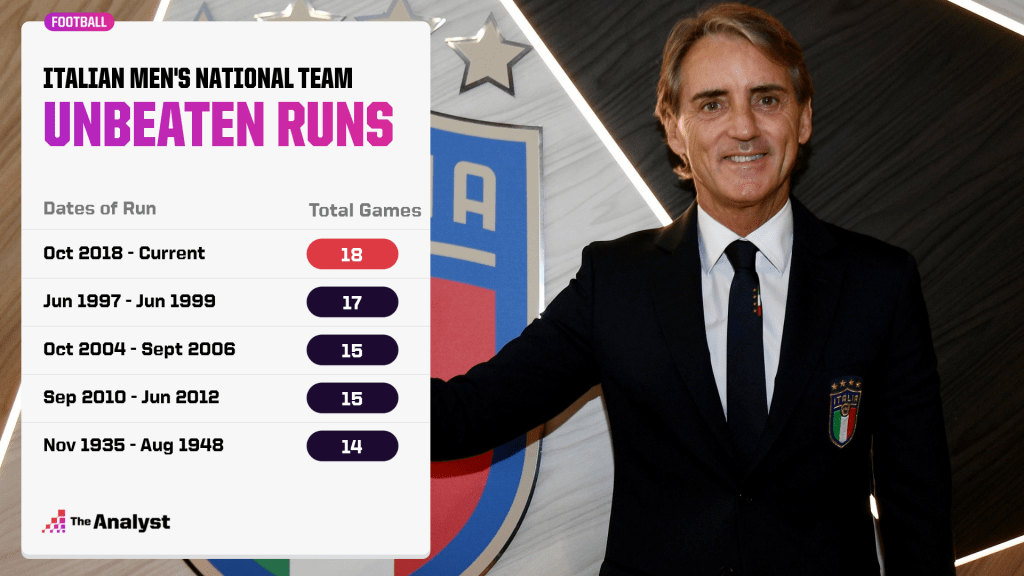
Shuffling the Pack
While Mancini has stuck with his preferred formation, he’s not been afraid to mix up his personnel. Remarkably, he’s deployed 64 different players in his 27 games so far, which is more than any other manager in their first 27 matches in charge of the Italian national side.
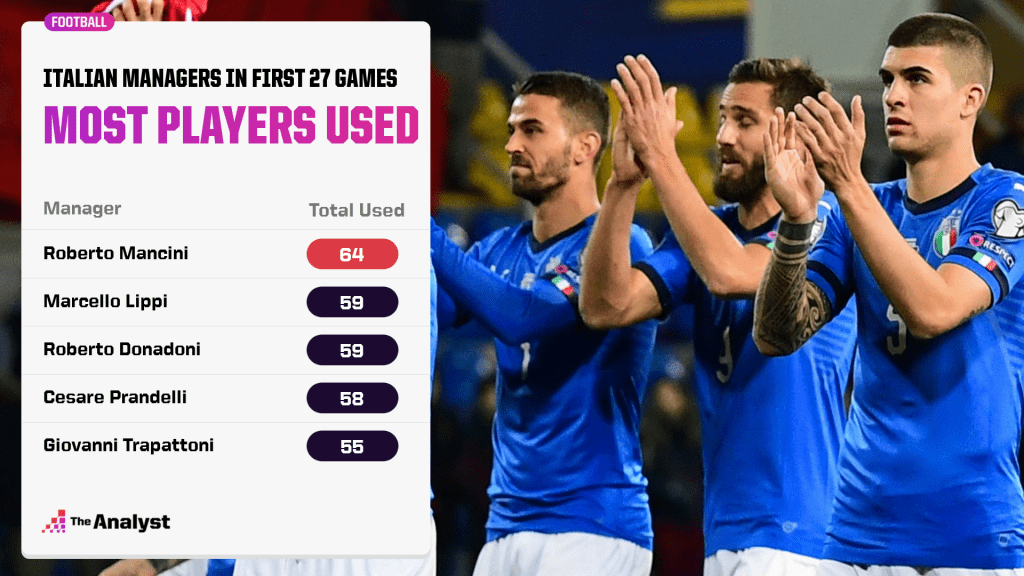
His tinkering had paid off too. Of those players, a total of 27 have found the net. Only two Italian managers have seen more players score for them: Vittorio Pozzo (53) and Cesare Prandelli (29).
That said, he does appear to have found a core group of players he trusts. Jorginho appears to be locked in as a deep-lying playmaker, while Leonardo Bonucci has been a constant presence at the back. Nicoló Barella has been largely used as a No. 8 in midfield, pushing forward almost as a supporting playmaker. Lorenzo Insigne, who shockingly played only 15 minutes in the two-legged tie against Sweden in 2018, has made the fifth-most minutes of outfielders.
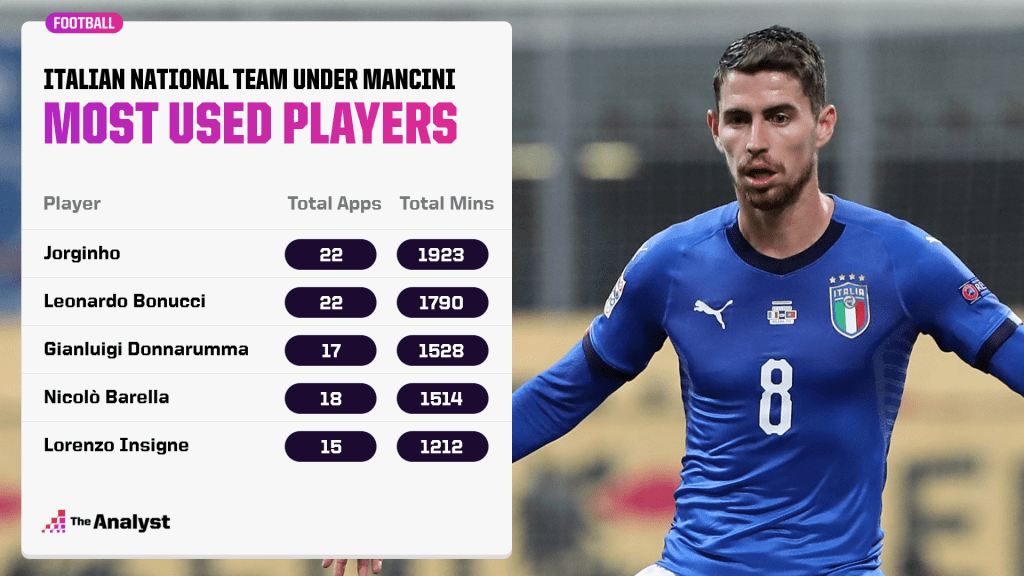
Another benefit Jorginho brings is his ability from the penalty spot, an asset that becomes even more important as we approach a summer of knockout football. The Italian midfielder has scored five penalty goals under Mancini already. Excluding shootouts, only two players have scored more penalties in history for Italy. Maybe you’ve heard of them – Roberto Baggio (7) and Alessandro Del Piero (6).
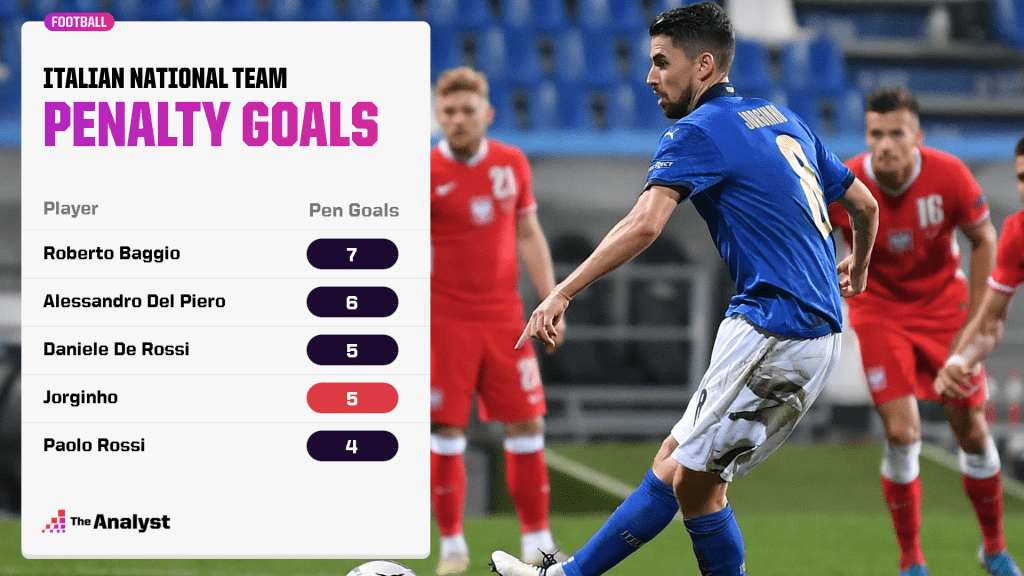
Is All that Glitters Gold?
Despite Italy’s potency in front of goal, there’s not been a standout scorer for Mancini’s team. Andrea Belotti has scored the most goals under his tutelage with six strikes, but that doesn’t exactly stack up compared to other European goalscorers in internationals. In fact, 49 players have scored more goals than Belotti’s six in that time.
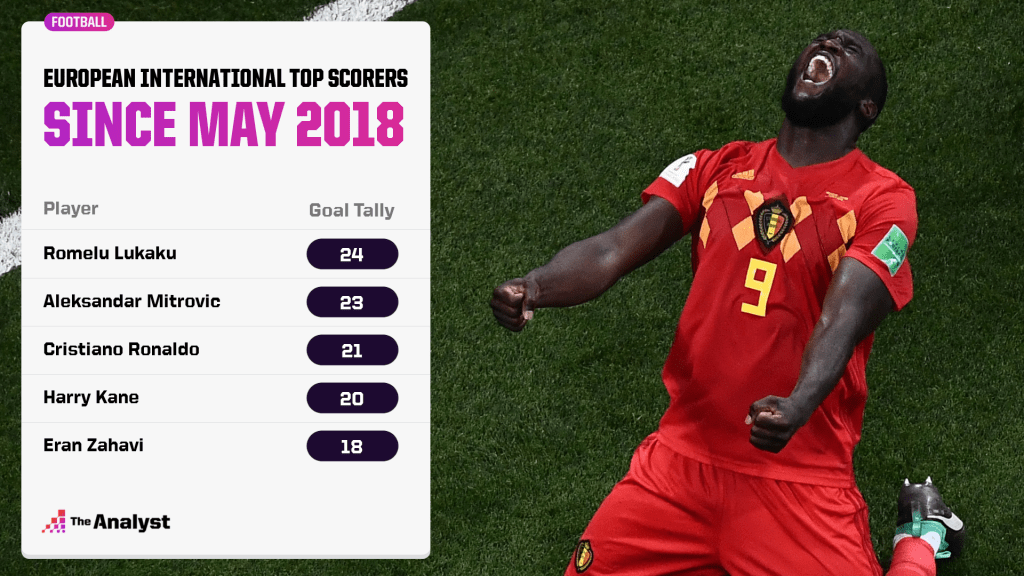
Having a top scorer who’s only scored six goals in a team that’s averaging three goals a game seems a little odd. And it’s not just Belotti that’s struggled, with some of Italy’s main attacking threats failing to replicate their domestic form for their country.
If there’s one criticism you could level at Mancini’s side, it’s the lack of a real offensive leader. A genuine goalscorer who can drag their side out of difficult moments.
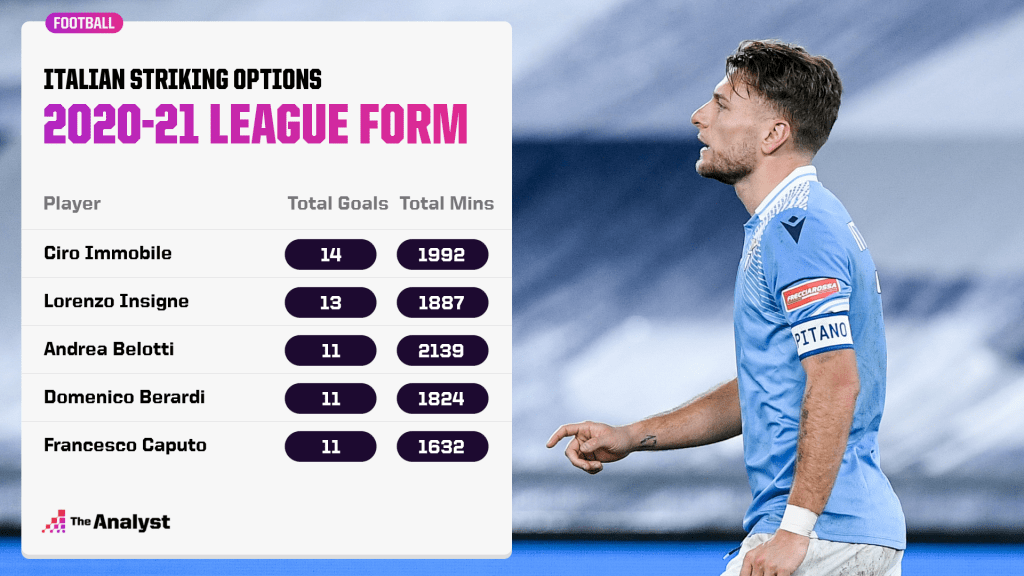
However, Italy do have a striking selection to call upon that have been performing domestically in 2020-21. Six Italian forwards have scored over 10 goals within the top five European leagues already this season, with five of those in the squad for the matches in this international break – only Moise Kean (11 goals) misses out, through injury.
Sceptics rightly point to their lack of any serious challenge in Euro 2020 qualifying, but Italy also topped their Nations League group without losing a match – a group that included the Netherlands, no less.
Mancini has successfully completed his first task, in making Italy a respected European power once again. Now comes the hardest point, translating these performances onto the biggest stage and leading them to a title this summer.
Design by Matt Sisneros.
